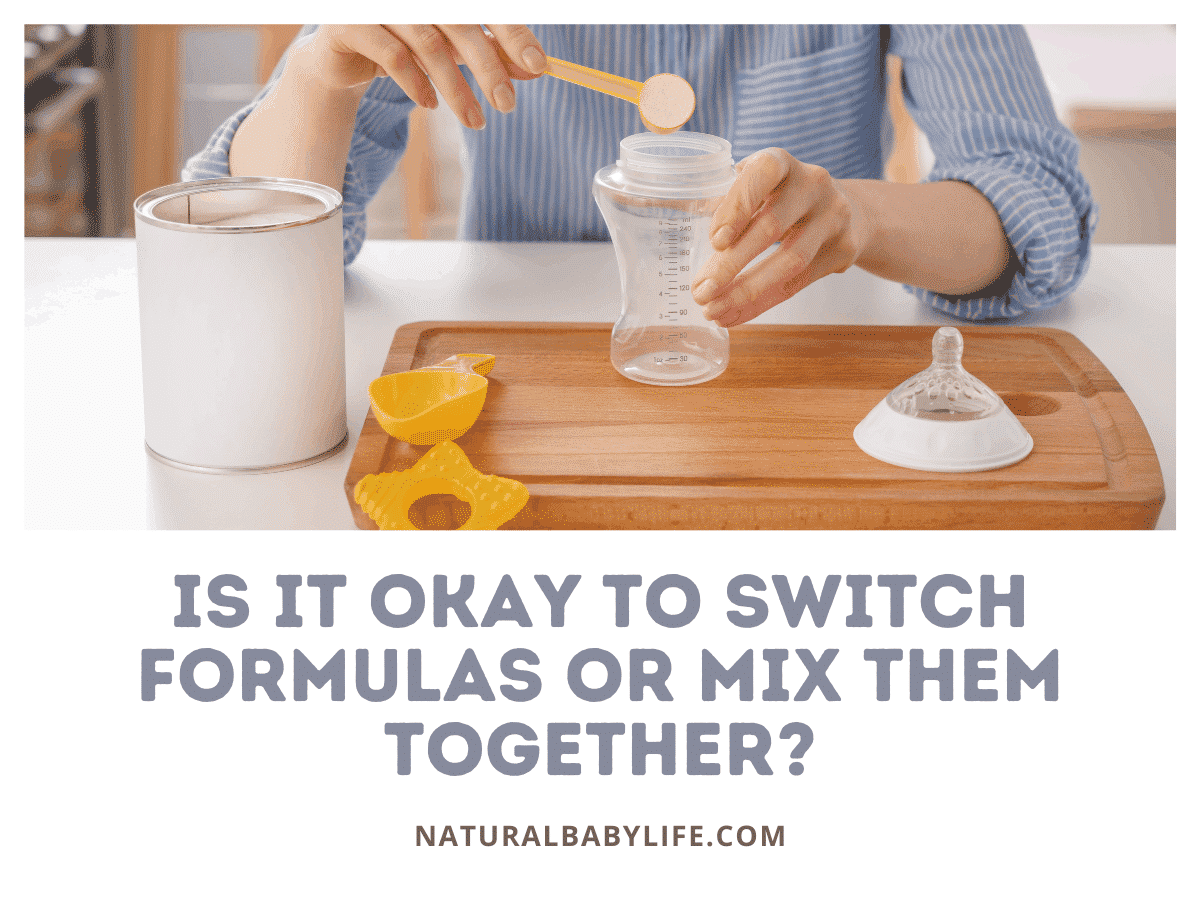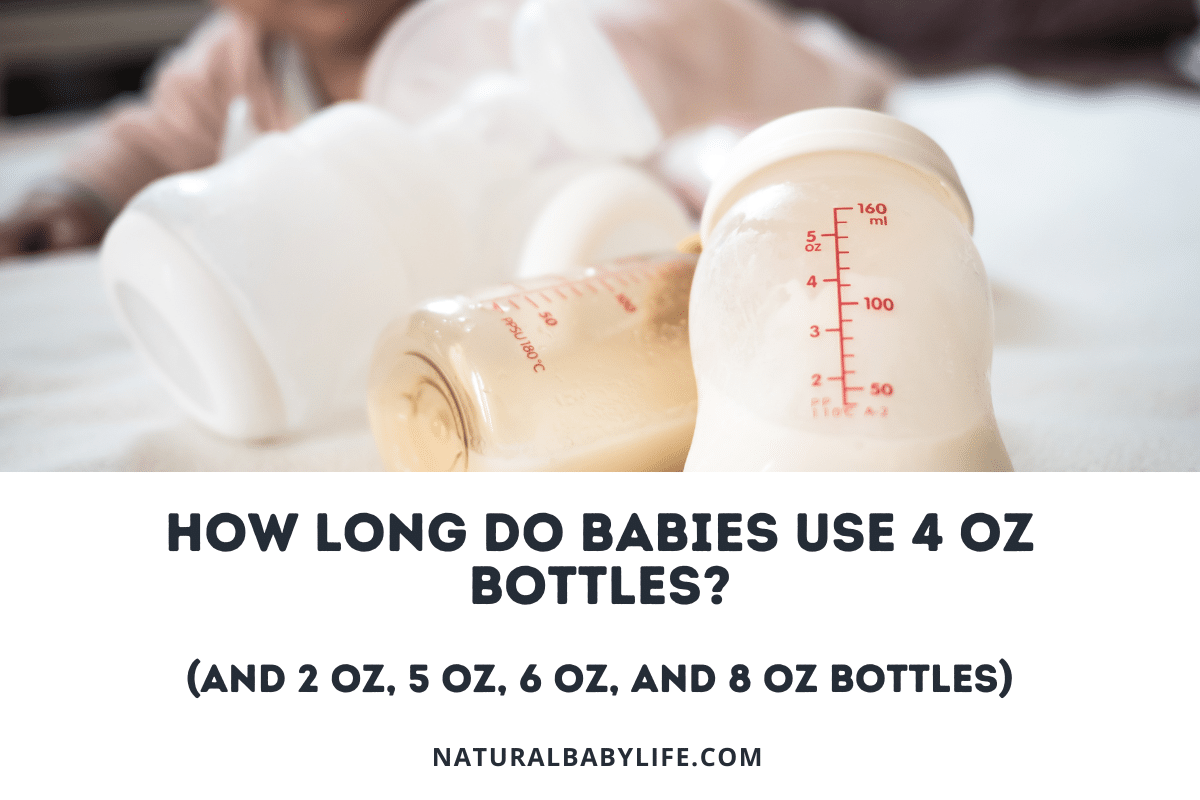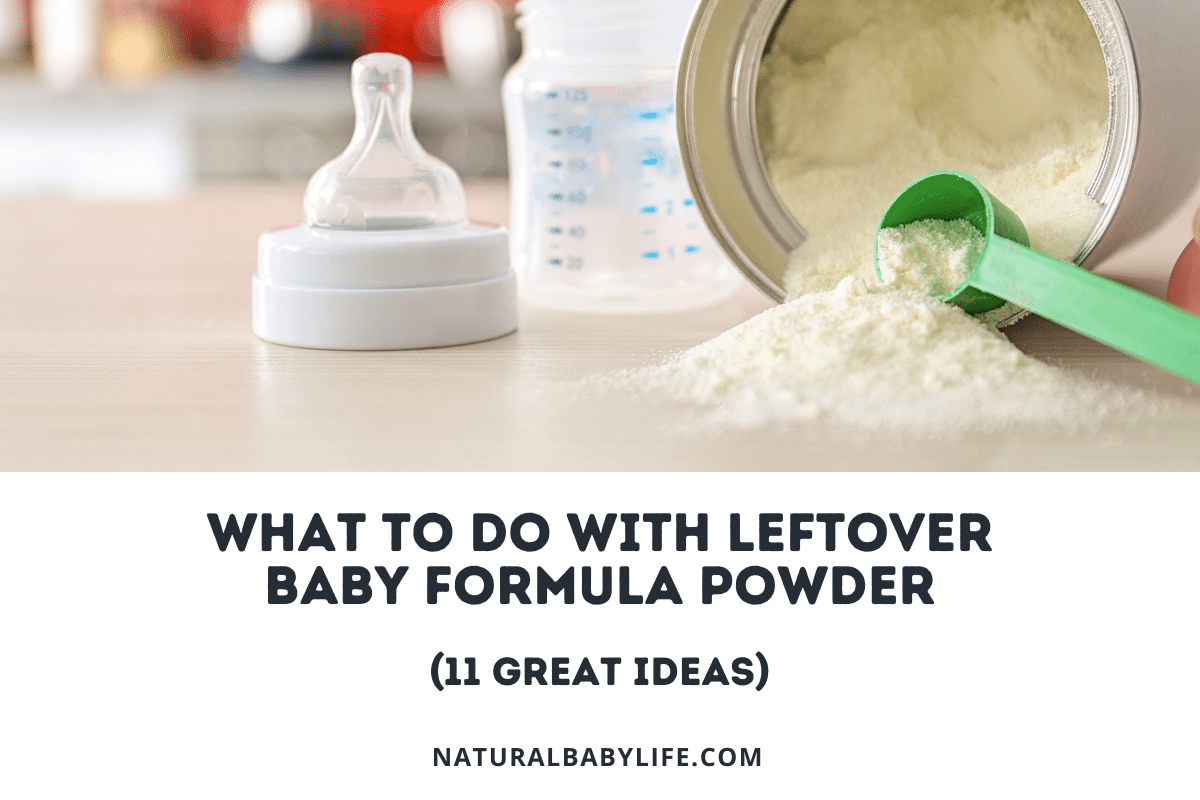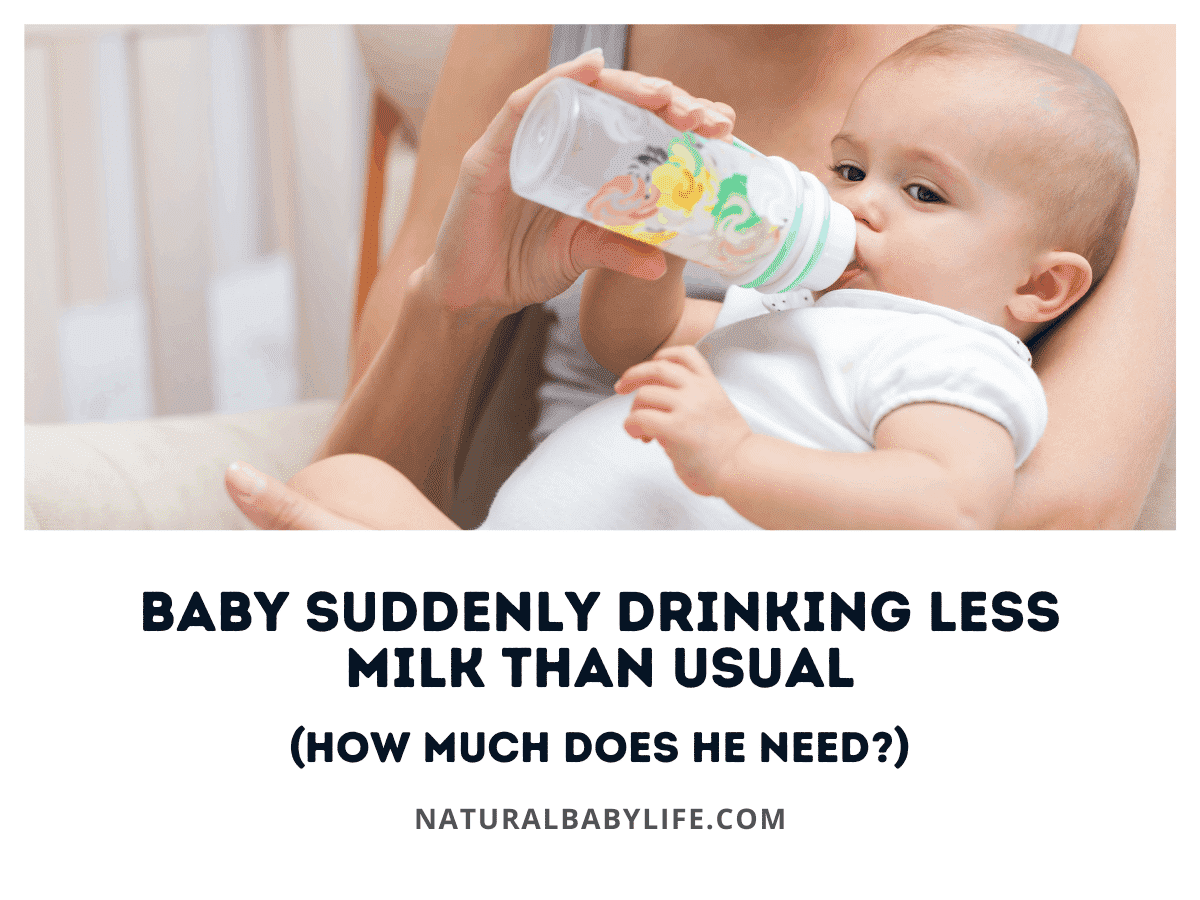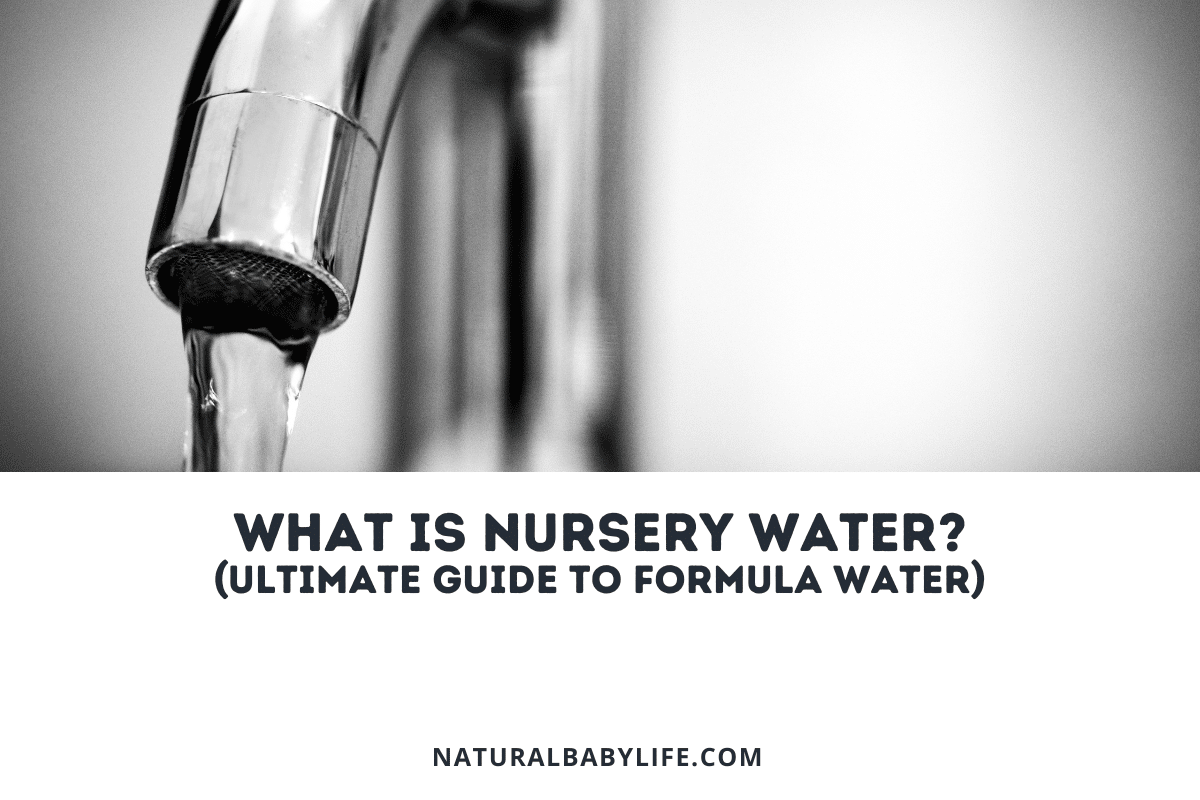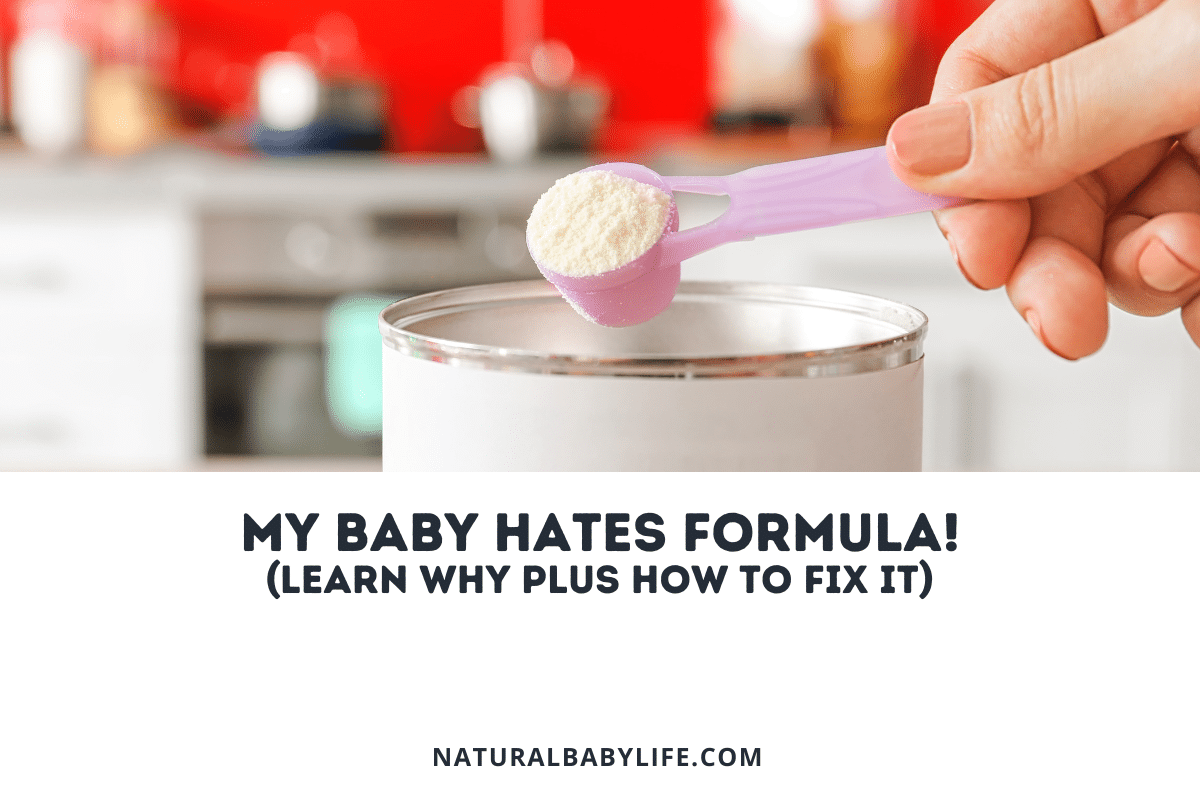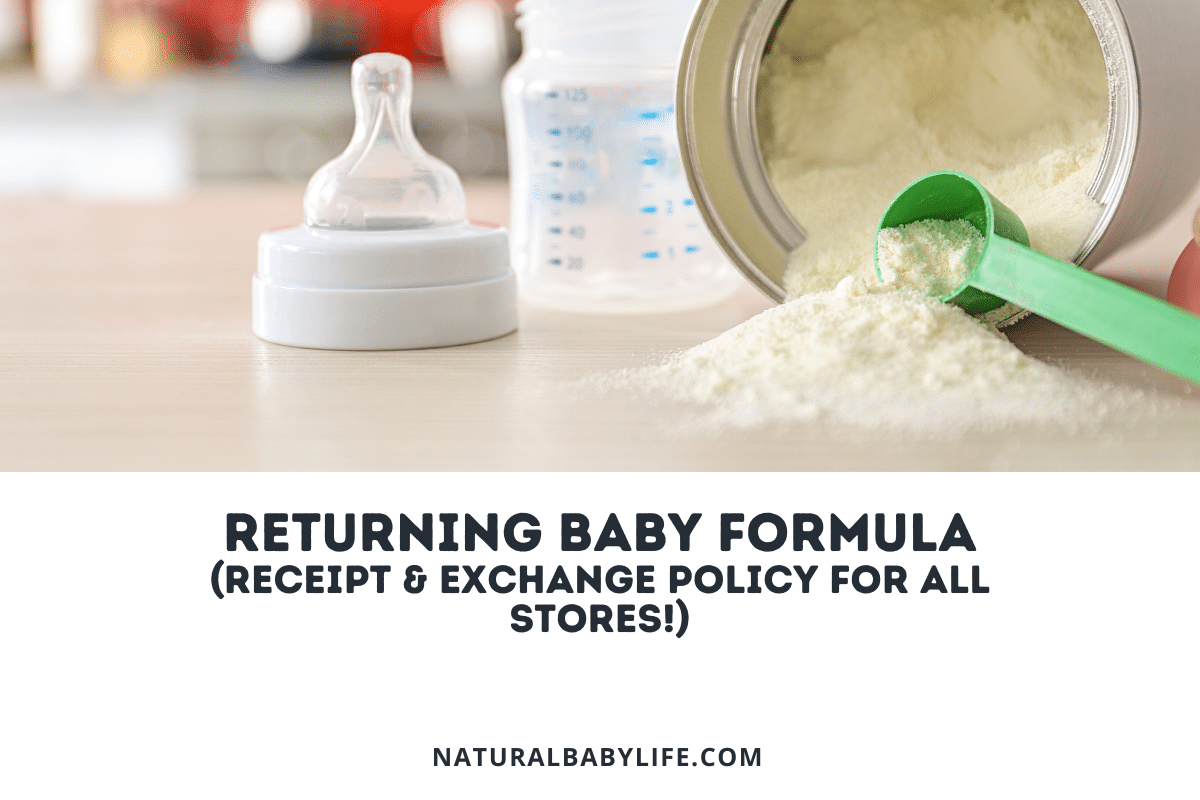Many new parents have experienced the feeling of being overwhelmed at the variety of options available at the baby formula aisle! Similarly, you may have been gifted with various types of formula from the hospital or friends and family. So it is common for parents to wonder if it is okay to switch between different formulas or mix them together.
Switching formulas is okay and unlikely to cause stomach upset in babies if the type of formula (cows’ milk-based, soy-based, or protein hydrolysate-based) is the same as they will have very similar ingredients. Switching between formula types could cause some initial stomach upset but may be necessary due to dietary restrictions.
Read on to learn more about how to spot an allergic reaction, when you can switch or mix formulas, and when you should NOT mix different formulas together.
Table of Contents
Is it safe for babies to switch formulas?
In general, it is safe for babies to switch formulas and try out new formulas.
As long as there are no allergy concerns requiring a special formulation, most baby formulas are created equal with just slight variations. Many parents experience a need or desire to change their little one’s formula for various reasons including finances, taste preferences or local store availability.
Whenever you are switching formulas, it is important to monitor your baby closely for the first day or 2 in order to spot any potential allergic reaction or digestive upset. While some changes in the color of stool, the odor of gas, etc. are normal – you should not see any significant issues such as digestive bleeding, hives, or forceful vomiting.
While some babies may be early “picky eaters”, most babies should be able to tolerate different tastes fairly well. If you end up trying different formulas, you may notice that your child prefers a certain brand. A little trial and error can’t hurt to find the right formula for your little one.
In fact, sometimes changing formulas is even medically necessary, due to an allergy or other type of negative reaction to a particular formula brand or ingredient.
When to switch formula because of gas or other issues
If your baby is experiencing frequent digestive symptoms such as gas, vomiting, colic, or constipation – they may have a sensitivity to dairy or another ingredient in their formula.
While some digestive upset can be normal in infants and newborns, if the problem seems to be directly linked to their formula and you see other symptoms of a sensitivity or allergy such as eczema, switching formulas can help. Although sometimes the resolution may be as simple as a change to a different brand, many parents chose to try a different kind of formula entirely such as a soy-based blend or one made specifically for sensitive tummies.
As always, check with your child’s doctor about the symptoms they are experiencing before making a major change such as a move from dairy to soy.
If severe allergies are present, a switch to a hydrolyzed or hypoallergenic formula may be necessary, and your pediatrician can help you navigate the options. There are other times when a doctor may recommend a switch to a different type of formula, such as when your baby needs to up their iron intake.
Switching formula within the same brand
Many parents are loyal to one brand for reasons such as price, availability, or nutritional benefits. When it comes to trying new formulas, switching formulas within the same brand can be the best way to go about things because there will likely only be small differences in the ingredients and consistency between the two.
It is a good idea to find a new formula that is as similar to your child’s old formula as possible. This will help ease the transition on their little tummies and will help ensure that they do not exhibit any symptoms to a new ingredient found in a different brand. Check the ingredient labels closely for differences – it can be difficult to compare products side-by-side!
Is it okay to switch baby formula back and forth?
While it is probably not a good idea to constantly change up your child’s formula, especially if they have a sensitive stomach, there should not be any significant health concerns with trying different formulas – as long as they don’t contain any ingredients that your child is allergic to.
If you are in a position where you need to switch your baby’s formula often due to product availability in your area, a limited budget, or other concerns, at least try to obtain formulas that are similar to each other in both flavor and ingredient blend. (For example, a store brand and a name brand of the exact same type of formula, or different flavors from within the same brand.)
This will help make the transition between formulas minimal for your little one.
How long should I try a formula before switching?
If your baby’s original formula just doesn’t seem to be working out, there is no harm in switching right away. And if they are experiencing any negative health issues, don’t feel pressured to finish up the container before making the switch. You can always gift or trade the unfinished formula to another new mom who could make better use of it.
But if you are switching to a new formula for the first time and aren’t sure how long you should stick with it before giving another one a try, give it some time before abandoning it for another option. Unless your child experiences a serious negative reaction right away, it may take a while for their tummies and taste buds to adjust to the new formula. So if you have a strong preference for a particular brand or formula, try to give it a couple of weeks to see how it goes.
If your child doesn’t seem to be liking the taste, this is when you can transition them more slowly to see if you can get them to enjoy the new formula over time. By mixing their old and new formulas together, they may eventually come to enjoy the flavor of their new formula.
How to switch formulas safely
When asking this question it is important to know the reason for switching. If it’s simply a matter of preference or price, then there is little urgency for the switch. If there is a medical reason such as an allergy or sensitivity then the urgency increases substantially.
When you are switching formulas due to severe digestive upset or a severe allergic reaction, there is no need to go slowly. In these instances, the safest transition is to go “cold turkey” on the formula that is not being tolerated, in favor of a gentler or hypoallergenic blend that will work better for your baby.
In the absence of any significant health concerns, many parents chose to make the switch slowly in order to ease any potential discomfort and avoid any issues with taste preferences.
How gradually you choose to wean your child off of one formula and onto another is up to you. Generally, parents will combine the 2 formulas together for a while, starting with a higher percentage of the original formula and eventually adding more and more of the new formula until the child is receiving 100% of the new formula.
Is it okay to mix formulas?
Many parents find themselves in a situation where they want or need to mix different formulas together. Whether you are easing your baby into your preferred new formula, attempting to save money, or you are trying to make use of free samples and baby shower gifts there are times when mixing formulas together seems to make the most sense. But is it ok? Is this safe?
Mixing baby formula of the same type together should be okay for your baby even if it comes from two different brands because formula ingredients are so similar across all major infant formula brands. However, there is generally no reason to mix formulas together in lieu of finishing one container and then starting the next.
While you don’t want to be constantly mixing formulas without giving it any thought, there should not be any harm in mixing 2 formulas of the same or similar type. When mixing formulas, be sure to follow the same guidelines for safe preparation as you normally would. As with switching formulas, be sure to watch your baby for any negative reactions and weigh them periodically to make sure they are getting enough nutrition.
Can you mix formula from the same brand?
If you are going to mix different formulas together, for whatever reason, combining formulas from the same brand is likely to give you the fewest problems.
Different brands can use different types of ingredients – and if your baby experiences any issues with one of them, although unlikely, it would be hard for you to tell which ingredient is the culprit. In addition, combining different formulas can lead to an upset tummy due to the existence of multiple different sweeteners for instance.
Can you mix Alimentum or Nutramigen with regular formula?
Hypoallergenic formulas like Alimentum, Nutramigen, and Pregestamil have been specially formulated to break down the milk protein in the formula for babies that have difficulty digesting them.
If your child’s doctor has recommended one of these special formulas, it is to help reduce your child’s allergic reaction to their formula. For this reason, mixing them with regular formulas would be counter-intuitive and is not a good idea.
For babies that require special formula, it’s always a good idea to check to see if your insurance will cover the cost as they can be quite a bit more expensive than standard formulas.
Can you mix soy formula with regular formula?
It depends. If you are weaning your baby off of soy or dairy formula due to an allergy, it is never a good idea to continue giving them the formula that isn’t agreeing with their stomach. But if you are just wanting to mix soy and regular formula because that’s what you happen to have on hand or you want to help your non-allergic baby transition, the answer is it should be ok.
As always, if you have any questions or concerns regarding switching formulas or mixing them together, be sure to consult with your child’s pediatrician.
If you found this article informative and helpful, please consider sharing it with others!

